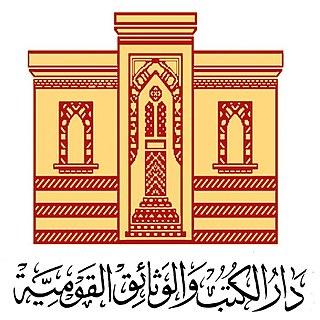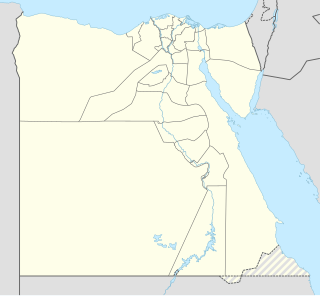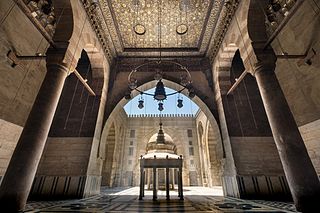
Alexandria is the third-largest city in Egypt after Cairo and Giza, the seventh-largest city in Africa, and a major economic centre. Called the "Bride of the Mediterranean" by locals, Alexandria is the largest city on the Mediterranean, the fourth-largest city in the Arab world, and the ninth-largest urban area in Africa as well as the 79th largest urban area by population on Earth. The city extends about 40 km (25 mi) at the northern coast of Egypt along the Mediterranean Sea. Alexandria is a popular tourist destination, and an important industrial centre due to its natural gas and oil pipelines from Suez.

Egyptology is the study of ancient Egyptian history, language, literature, religion, architecture and art from the 5th millennium BC until the end of its native religious practices in the 4th century AD. A practitioner of the discipline is an "Egyptologist". In Europe, particularly on the Continent, Egyptology is primarily regarded as being a philological discipline, while in North America it is often regarded as a branch of archaeology.

Saad Zaghloul was an Egyptian revolutionary and statesman. He was the leader of Egypt's nationalist Wafd Party. He served as Prime Minister of Egypt from 26 January 1924 to 24 November 1924.

Al-Rifa'i Mosque is located in Midan al-Qal'a, adjacent to the Cairo Citadel. Now, it is also the royal mausoleum of Muhammad Ali's family. The building is located opposite the Mosque-Madrassa of Sultan Hassan, which dates from around 1361, and was architecturally conceived as a complement to the older structure. This was part of a vast campaign by the 19th century rulers of Egypt to both associate themselves with the perceived glory of earlier periods in Egypt's Islamic history and modernize the city. The mosque was constructed next to two large public squares and off of several European style boulevards constructed around the same time.
The Citadel of Cairo or Citadel of Saladin is a medieval Islamic-era fortification in Cairo, Egypt, built by Salah ad-Din (Saladin) and further developed by subsequent Egyptian rulers. It was the seat of government in Egypt and the residence of its rulers for nearly 700 years from the 13th to the 19th centuries. Its location on a promontory of the Mokattam hills near the center of Cairo commands a strategic position overlooking the city and dominating its skyline. At the time of its construction, it was among the most impressive and ambitious military fortification projects of its time. It is now a preserved historic site, including mosques and museums.

The Egyptian National Library and Archives is located in Nile Corniche, Cairo and is the largest library in Egypt, followed by Al-Azhar University and the Bibliotheca Alexandrina. The Egyptian National Library and Archives are a non-profit government organization.

Heliopolis was a suburb outside Cairo, Egypt, which has since merged with Cairo as a district of the city and is one of the more affluent areas of Cairo. It was established in 1905 by the Heliopolis Oasis Company headed by the Belgian industrialist Édouard Empain and by Boghos Nubar, son of the Egyptian Prime Minister Nubar Pasha. It is the location of the Cairo International Airport. The population of Heliopolis is estimated at some 142,968 individuals (2016).
"Bilādī, laki ḥubbī wa fuʾādī", also known by its incipit as "Bilady, Bilady, Bilady", is the national anthem of Egypt, composed by Sayed Darwish and written by Muhammad Yunis al-Qadi. It was adopted in 1979.
Mustafa Kamel Mansour was an Egyptian footballer who played as a goalkeeper for Egypt at the 1934 FIFA World Cup. He is also notable for being one of the first non-British or Irish players to play in the Scottish leagues.

The Imam Hussein Mosque or Jame Sayyidna Husayn is a mosque and mausoleum of Husayn ibn Ali, originally built in 1154, and then later reconstructed in 1874. The mosque is located in Cairo, Egypt, near the Khan El-Khalili bazaar, near-by the famous Al Azhar Mosque, in an area known as Al-Hussain. It is considered to be one of the holiest Islamic sites in Egypt. Some Shia Muslims believe that Husayn's head is buried on the grounds of the mosque where a mausoleum is located today and considered to be what is left of the Fatimid architecture in the building.
The City of the Dead, or Cairo Necropolis, also referred to as theQarafa, is a series of vast Islamic-era necropolises and cemeteries in Cairo, Egypt. They extend to the north and to the south of the Cairo Citadel, below the Mokattam Hills and outside the historic city walls, covering an area roughly 4 miles long. They are included in the UNESCO World Heritage Site of "Historic Cairo".
Muhammad Rabee al-Zawahiri is an Egyptian Islamist who was a member of Egyptian Islamic Jihad and one of 14 people subjected to extraordinary rendition by the CIA prior to the 2001 War on Terror. He is the younger brother of Al Qaeda leader Ayman al-Zawahiri.
Mustafa Kamel Murad was an Egyptian military officer and politician.
Mostafa Kamel Taha Yossef El-Gamal was an Egyptian football forward who played for Egypt in the 1934 FIFA World Cup. He also played for Al-Mokhtalat SC, and represented Egypt at the 1936 Summer Olympics.
Mostafa Hussein Ahmed Mostafa is the former Egyptian Minister of State for Environmental Affairs. He was sworn into Prime Minister Hesham Qandil's cabinet, the Qandil Cabinet, on 2 August 2012, following the 2011–2012 Egyptian revolution that deposed President Hosni Mubarak, retaining his position from former Prime Minister Kamal Ganzouri's interim government. He was one of the independent ministers in the cabinet.
Mohab Mostafa Al Sayed Qasim is the suspected ringleader of an Egyptian terrorist cell responsible for carrying out the December 2016 Botroseya Church bombing. Following the bombing, Qasim’s 2015 trip to Qatar became the subject of a controversy over alleged Qatari ties to the terrorist attack.

Mosque-Madrasa of Sultan Barquq or Mosque-Madrasa-Khanqah of Az-Zaher Barquq is a religious complex in Islamic Cairo, the historic medieval district of Cairo, Egypt. It was commissioned by Sultan al-Zahir Barquq as a school for religious education in the four Islamic schools of thought, composed of a mosque, madrasa, mausoleum and khanqah. The complex was constructed in 1384-1386 CE, with the dome added last. It was the first architectural facility built during the time of the Circassian (Burji) dynasty of Mamluk Sultanate.

The Mausoleum of Imam al-Shafi’i(Arabic: قبة الإمام الشافعي ) is a mausoleum dedicated to Imam Al-Shafi’i, one of the four Sunni Imams who founded the Shafi’i Sunni Islamic school of jurisprudence. Located at the Imam Shafi’i Street in the City of the Dead, Cairo, the mausoleum is a hallmark of Ayyubid style architecture and historical significance.

The Madrasa of Amir Sunqur Sa'di, also commonly known as the Mausoleum of (Sheikh) Hasan Sadaqa, is a medieval Mamluk-era madrasa structure and mausoleum in Cairo, Egypt. It was originally built between 1315 and 1321 CE by amir Sunqur Sa'di. Sunqur was forced to leave Egypt in his lifetime and was never buried there, but a sheikh known as Hasan Sadaqa was later buried in it and therefore the building is often known by his name. From the 17th century onward the complex was converted into Mevlevi Sufi lodge and is open today as the Mawlawiyya Museum or Museo Mevlevi.

The Madrasa of Umm al-Sultan Sha'ban is a Mamluk-era complex located in the Al-Darb al-Ahmar area of Islamic Cairo in Egypt. It was founded or built in 1368-69 CE on the order of Sultan al-Ashraf Sha'ban in honour of his mother, Khawand Baraka. It is located outside Bab Zuweila along al-Tabbana street, and is adjoined to the north by the Bayt al-Razzaz palace. The complex is made up of a college (madrasa), mausoleum, water trough (hawd), and a primary school (maktab).













